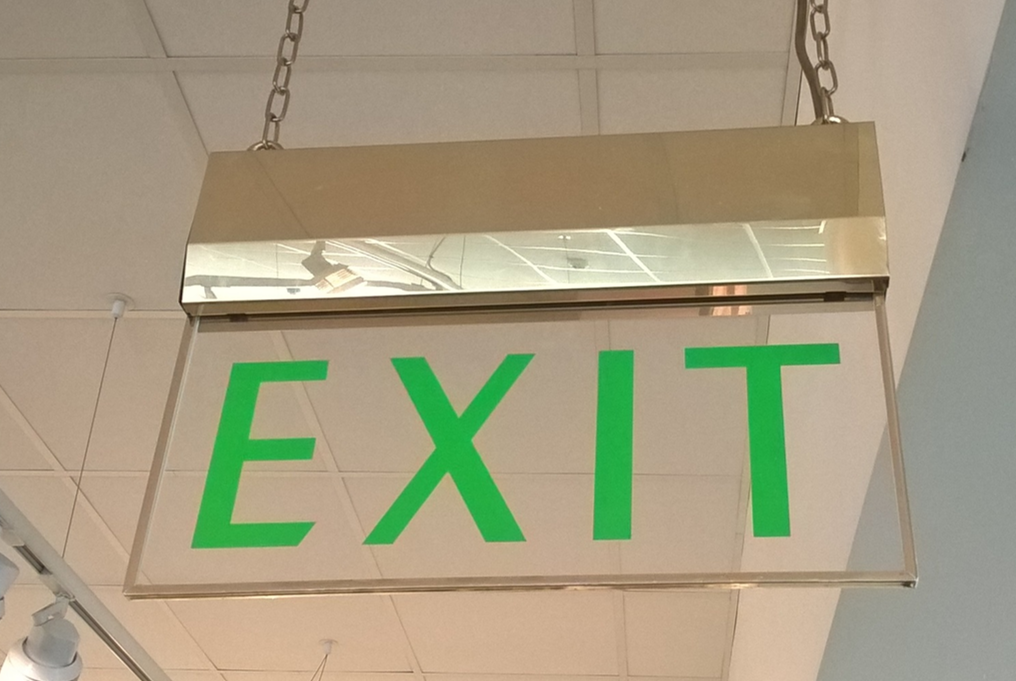Emergency lighting is an essential part of the fire safety provision of a building and is a requirement of The Regulatory Reform (Fire Safety) Order 2005. In the event of a fire or building evacuation, it’s a lifeline for staff and people in the building, illuminating the route to the nearest fire exit and assembly area.
When a fire occurs or the local lighting fails, a building can be left in darkness. This can leave people inside the building disoriented, potentially causing panic and confusion. It is the last thing you need when you are trying to evacuate a building as quickly and safely as possible.
The British Standard provides the emergency lighting designer with clear guidelines to work to. BS 5266-1: 2011 embraces residential hotels, clubs, hospitals, nursing homes, schools and colleges, licensed premises, offices, museums, shops, multi-storey dwellings, etc. It is worth bearing in mind, though, that whilst this standard recommends the types and duration of emergency lighting systems relating to each category of premises, your particular building may warrant a higher standard of installation. It is recommended that you get an expert in to review the emergency lighting you need in your building(s) to ensure it adequately meets your particular circumstances.
What is Emergency Lighting?
Emergency lighting comes on when the mains power to normal lighting is disconnected. There are varying types of emergency lighting:
- Escape route lighting. These lights identify the escape route, ensuring it can be effectively identified and safely used by the occupants of the building to make their way quickly from the building.
- Open area lighting. This ensures that there is sufficient illumination in the building to allow occupants to reach a place where the escape route is clearly identified. It helps to minimise panic while people leave the building.
- High risk task area lighting. There may be people involved in potentially dangerous processes which need to be shut down properly prior to their evacuation from the building. High risk area lighting provides illumination in those particular areas.
- Standby lighting. This will enable normal activities to continue. It is something that may or may not be needed, depending on the use and occupancy of the premises. It does not form part of the legal requirements so is down to management preference.
Types of Emergency Lighting
There are two types of emergency lighting:
- Self Contained. These fittings have individual batteries in each light fitting. It’s generally the cheaper of the two options, and has advantages and disadvantages. The installation is faster, has low maintenance costs and can be easily extended. The integrity of the system is seen as greater because each fitting is independent of the others. On the downside, however, the battery life tends to be lower than a central system and testing/maintenance has to be done on each fitting.
- Central Battery Source. BS EN 60598-2-22 defines such a system as “luminaire for maintained or non-maintained operation which is energized from a central emergency power system that is not contained within the luminaire”. In other words, the individual emergency light fittings are connected to a central battery source. This makes the environment more stable as the light fittings are in a protected environment, increases battery life to between 5 and 25 years and maintenance is easier and faster than with self contained systems. However, installation costs are much higher (due to the type of cabling required and connections from a central system to the individual units), system integrity can be challenged by faulty wiring or battery failure and the system could experience voltage drop (where units are furthest away from the central battery store).Maintenance
It is essential that an emergency lighting system is well maintained by a qualified professional, the results of which should be recorded.
Regular testing is also crucial. A short functional test must be carried out monthly, as per BS EN 50172:2004 / BS 5266-8:2004. A “drain test” should be carried out annually, where the emergency lights are tested for their full duration (eg 3 hours). They must be working at the end of the test. Usually, your fire alarm company will carry out such a test at the same time as doing the fire alarm maintenance.
More Information
If you need more information about the British Standard, you can read the base guidance contained in BS 5266-1: 2011 Code of practice for emergency lighting of premises. Gives general rules and guidance on the provision and operation of emergency lighting in most premises other than dwelling houses.
OR you can get in touch with us! 0845 402 3046 or email us at sales@sssystems.co.uk

